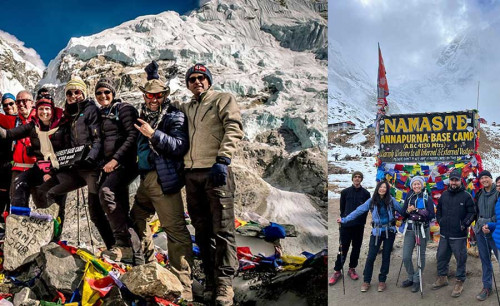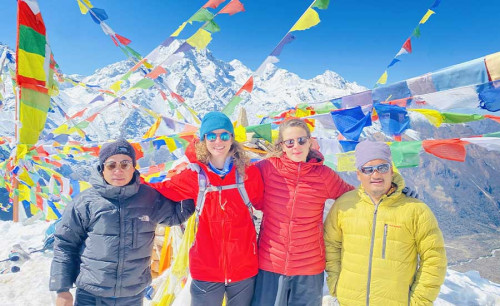Cremation at Pashupatinath Temple
Published On : 11th May, 2025 By Himalayan Dream Team

Pashupatinath Temple, situated along the sacred Bagmati River in Kathmandu, Nepal, is one of the most revered Hindu temples dedicated to Lord Shiva. Recognized as a UNESCO World Heritage Site, the Shree Pashupatinath Temple attracts thousands of devotees and travelers annually for its religious importance and historical grandeur. For those wondering what is Pashupatinath, it is not just a holy temple—it is a spiritual epicenter that represents the deep-rooted beliefs of Hinduism. Its architectural beauty, ancient shrines, and spiritual ambiance make it a significant destination for pilgrims seeking blessings and spiritual reflection in Nepal.
Beyond its role as a pilgrimage site, Pashupatinath Temple is world-renowned for its traditional open-air cremation ceremonies, performed daily at the cremation ghats along the river. Known as the most sacred site for Hindu cremation in Nepal, the Pashupatinath Temple cremation complex is where families conduct final rites according to ancient customs. Visitors are drawn not only by religious devotion but also by the powerful experience of witnessing the Pashupatinath cremation ceremony, which offers a rare and profound glimpse into the Hindu cremation process. This sacred ritual, deeply symbolic and spiritually rich, underscores why cremation at Pashupatinath Temple holds such cultural and spiritual weight in Nepalese society.
Cremation in Pashupatinath: A Daily Sacred Ceremony

The cremation process at Pashupatinath Temple is part of everyday life and death in Kathmandu. Each day, families bring the bodies of their deceased loved ones to the temple's cremation complex, located beside the holy Bagmati River. Cremation usually begins in the morning and continues until dusk. Known as one of the holiest cremation sites in Nepal, the temple allows family members to perform funeral rituals according to ancient Hindu customs. Visitors often observe these rituals from across the river, where respectful distance is maintained.
Cremation here is not just a personal ceremony but also a cultural practice that reflects Hindu beliefs about life, death, and the soul’s journey. The sight of the burning pyres, smoke rising into the sky, and mourners chanting prayers is deeply moving, offering a unique window into Nepalese and Hindu traditions.
The Hindu Cremation Process at Pashupatinath
The cremation process at Pashupatinath Temple follows specific steps based on Hindu funeral traditions:
- Final Farewell at the Riverbank: The deceased is placed on a bamboo stretcher and brought to the riverbank. The body is laid in a way that the feet touch the holy Bagmati River. It is believed that taking the last breath beside sacred water purifies the soul.
- Ritual Purification: Relatives pour holy water into the deceased’s mouth, usually by trickling water from the Bagmati along the thumb of the right hand. The body is then wrapped in white or yellow cloth—often with sacred mantras printed on them.
- Symbolic Preparation: Before the final journey, the body is decorated with flowers, tika (a red vermilion powder), and turmeric to symbolize the soul’s passage to the next life.
- The Funeral Pyre: A funeral pyre made of sandalwood and other fragrant woods is prepared. The body is laid on the pyre with the head pointing north. The person who lights the pyre is traditionally the eldest son of the deceased. Fire is first applied to the mouth.
- Ashes to the River: Once the body is reduced to ashes, the remains are collected and immersed in the Bagmati River. This act symbolizes the soul's release from the body and its return to the elements—earth, fire, air, water, and space.
Cremation in Nepal: Cost, Process, and Rituals Explained
What is the cost of cremation in Nepal?
The cost of cremation in Nepal varies depending on the location and services involved. At Pashupatinath Temple, one of the most sacred Hindu cremation sites in Kathmandu, basic open-air cremation costs can range from NPR 10,000 to NPR 50,000 (approx. USD 75–375). The price includes firewood, labor, and religious items. More elaborate funerals with priests, music, and pujas may cost significantly more.
What is the process of cremation in Nepal?
In Nepal, traditional Hindu cremation rituals begin with the bathing and dressing of the deceased in clean or ceremonial clothes. The body is carried on a bamboo stretcher to the cremation ghat—most famously along the Bagmati River near Pashupatinath. The eldest son or closest male relative performs the final rites, including lighting the funeral pyre. After the cremation, ashes are collected and often immersed in a sacred river.
What are the rituals of 13 days after death in Nepal?
The 13-day mourning period, known as shraddha kriya, is a vital part of Hindu death rituals in Nepal. During this time, the family performs daily pujas, offers rice balls (pinda dana), and abstains from meat and celebrations. On the 13th day, a purification ceremony called suddhi is held, marking the official end of mourning. A larger feast or donation to the poor is often made in memory of the deceased.
What is the time for cremation in Nepal?
Cremations typically take place within 24 hours of death, especially in Hindu communities. Timing can vary depending on religious customs, family arrangements, and availability at cremation ghats. Morning hours are often preferred for spiritual reasons.
Who is the cheapest cremation provider in Nepal?
While traditional riverbank cremations remain common, electric crematoriums in Kathmandu and other cities now offer more affordable and environmentally friendly options. These cost as low as NPR 5,000–10,000, making them the most economical cremation choice in Nepal.
Why is cremation more expensive sometimes?
Cremation costs rise due to factors like increased firewood prices, elaborate rituals, hiring of priests, and the location—cremating at major religious sites like Pashupatinath often incurs premium charges. Families also spend more on offerings, feast ceremonies, and mourning rituals, which adds to the overall cost.
Pashupatinath Temple Cremation Time: When Do Ceremonies Happen?
Cremation ceremonies at Pashupatinath Temple in Kathmandu typically take place early in the morning to late afternoon, with the most auspicious times being in the morning hours. According to Hindu beliefs, cremating a body at sunrise ensures spiritual liberation. The timing also depends on the family’s availability and the crowd at the ghats.
Nepal Cremation River: Sacred Site Along the Bagmati
The Bagmati River serves as the main cremation river in Nepal, particularly at Pashupatinath Temple, one of the most sacred Hindu pilgrimage sites. Families bring their loved ones to be cremated on the riverbanks, believing the flowing water helps carry the soul toward liberation (moksha). This tradition reflects the profound link between nature, water, and spirituality in Nepali cremation rites.
Pashupatinath Cremation Process: Step-by-Step Rituals
The Pashupatinath cremation process follows centuries-old Hindu rituals. After the body is bathed and adorned with fresh clothes and garlands, it is placed on a bamboo stretcher. A male relative, often the eldest son, performs the final rites and lights the funeral pyre. The ashes are later scattered into the Bagmati River. This cremation temple in Kathmandu is renowned for offering an authentic insight into Nepali and Hindu beliefs about death and rebirth.
Pashupatinath Temple Ceremony: Beyond Cremation
Apart from cremation, Pashupatinath Temple ceremonies include daily pujas, aarti rituals, and major festivals like Maha Shivaratri. The temple hosts spiritual prayers, Shiva abhishek, and Jyotirlinga worship, attracting thousands of pilgrims. The evening Bagmati aarti is a particularly mesmerizing experience, symbolizing light overcoming darkness and honoring the divine presence of Lord Shiva.
Cremation Temple Kathmandu: A Unique Cultural Experience
As the most iconic cremation temple in Kathmandu, Pashupatinath not only serves as a spiritual center but also as a cultural landmark. Visitors can observe real-time cremation ceremonies (respectfully from a distance), explore ancient architecture, and gain insight into Nepal’s deeply rooted Hindu funeral customs. This makes it a must-visit for both spiritual seekers and cultural travelers.
Pashupatinath Temple History in Nepali Language (पशुपतिनाथको इतिहास)
पशुपतिनाथ मन्दिरको इतिहास निकै पुरानो र पवित्र मानिन्छ। यो मन्दिर भगवान शिवको उपासना गर्नको लागि विश्वभरका हिन्दु भक्तजनहरूको प्रमुख गन्तव्य हो। मन्दिरको स्थापना प्राचीन समयमा भएको विश्वास गरिन्छ र यो यूनेस्को विश्व सम्पदा सूचीमा सूचीकृत छ। बागमती नदीको किनारमा अवस्थित यस मन्दिरमा दैनिक पूजाआजा, संस्कार र धार्मिक कार्यक्रमहरू सञ्चालन गरिन्छ।
Jyotirlinga in Nepal: Pashupatinath’s Sacred Identity
Pashupatinath is often associated with the Jyotirlingas, the sacred shrines of Lord Shiva. While traditionally there are 12 Jyotirlingas in India, Pashupatinath Temple is revered as the spiritual equivalent in Nepal, symbolizing Lord Shiva’s all-pervasive light (jyoti). This makes it a deeply venerated Nepal temple for Shiva devotees.
Nepal Temple Tour: Why Pashupatinath Is a Spiritual Highlight
Among the many sacred Nepal temples, Pashupatinath stands out for its spiritual power, historical significance, and continuous religious practice. It’s more than just a cremation site—it’s a living temple where spirituality, life, and death intersect daily. A visit to this holy site offers a unique chance to witness Nepal’s cultural depth and religious devotion firsthand.
Significance of Cremation in Hindu Belief
In Hinduism, death is viewed as a transformation, not an end. The cremation ceremony at Pashupatinath Temple is deeply tied to the philosophy of karma and rebirth. Hindus believe that the soul (Atman) is eternal and leaves the body at death to begin a new cycle of life, or, in ideal cases, attain liberation (moksha).
Performing the last rites at Pashupatinath is considered highly auspicious and is believed to help the soul in its transition toward a better rebirth or even liberation from the cycle of birth and death (samsara).
Mourning and Shraddha: Honoring the Departed
Following the cremation, the mourning period begins. Traditionally, sons of the deceased shave their heads and wear plain white clothing as a symbol of grief and detachment. For the first 13 days, the family remains in mourning and performs daily rituals.
A key part of post-cremation rituals is Shraddha, an offering of food to the departed soul, performed on specific days during the year following death. From the second year onwards, families continue to honor their ancestors during Pitri Paksha, a 16-day annual ritual that falls between September and October. These offerings are believed to bring peace to the soul and blessings to the family.
Visiting Pashupatinath Temple as a Cultural Experience
While the cremation ceremonies are private family affairs, respectful observation by tourists is allowed from the other side of the river. The site has become a cultural attraction due to its raw and spiritual portrayal of life and death. Visitors are reminded not to take close-up photographs of the cremation itself and to dress modestly.
The temple complex includes beautiful ancient shrines, sadhus (Hindu holy men), and centuries-old architecture that provide further context to Nepal’s religious and spiritual heritage. A visit to Pashupatinath is often included in many Kathmandu cultural tours for those interested in deep cultural insights.
Where to Stay Near Pashupatinath Temple
There are several hotels within a short distance from the temple. For comfort and convenience, some 5-star options include:
-
Hyatt Regency Kathmandu
-
Hotel Yak & Yeti
-
The Dwarika’s Hotel
These accommodations offer luxury stays with easy access to the Pashupatinath area for early morning rituals and ceremonies.
Trekking Options to Combine with a Pashupatinath Cremation Tour
- Everest Base Camp Trek: Begin your journey with blessings at Pashupatinath Temple before flying to Lukla and trekking to the base of the world’s highest peak, Mount Everest. This Everest Base Camp trek is ideal for adventure seekers looking to pair spiritual significance with high-altitude exploration.
- Annapurna Base Camp Trek: After visiting sacred sites in Kathmandu like Pashupatinath, take a scenic drive or flight to Pokhara and start your trek to Annapurna Base Camp. This combination offers cultural depth and natural beauty in one itinerary.
- Langtang Valley Trek: Just a few hours’ drive from Kathmandu, the Langtang region is perfect for those who want a shorter trek. Combine this Langtang Valley Trek with a half-day spiritual tour of Pashupatinath for a complete Himalayan experience.
- Manaslu Circuit Trek: For trekkers seeking an off-the-beaten-path experience, the Manaslu Circuit Trek offers remote trails and Buddhist culture. Start your journey with a spiritual introduction at Pashupatinath Temple before immersing yourself in Himalayan village life.
Final Thoughts: A Spiritual Encounter at Pashupatinath and Beyond
The cremation rituals at Pashupatinath Temple offer a deeply moving and eye-opening experience that reflects the heart of Hindu beliefs about life, death, karma, and rebirth. Observing the sacred final rites along the Bagmati River provides powerful insight into Nepal’s spiritual depth and cultural heritage. For visitors, witnessing the Pashupatinath cremation ceremony is not only emotionally profound but also spiritually transformative—an experience that leaves a lasting impression and a deeper understanding of the Hindu cremation process in Nepal.
To make your journey even more meaningful, a visit to Pashupatinath Temple can be beautifully combined with some of the best trekking in Nepal. After exploring the spiritual sites of Kathmandu, many travelers embark on iconic adventures like the Everest Base Camp Trek, Annapurna Circuit Trek, or Langtang Valley Trek, seamlessly blending cultural exploration with Himalayan trekking. Whether you’re drawn by Nepal’s spirituality or its snow-capped peaks, your journey can begin with blessings at Shree Pashupatinath Temple, making your Nepal travel experience both soulful and unforgettable.
Recent Posts
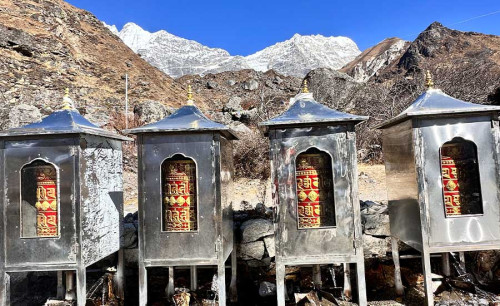
2nd Dec, 2025
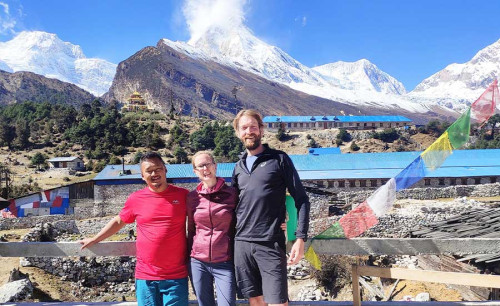
24th Nov, 2025
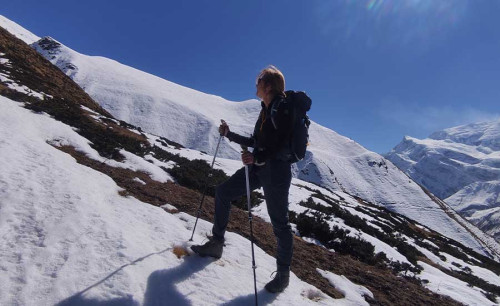
21st Nov, 2025
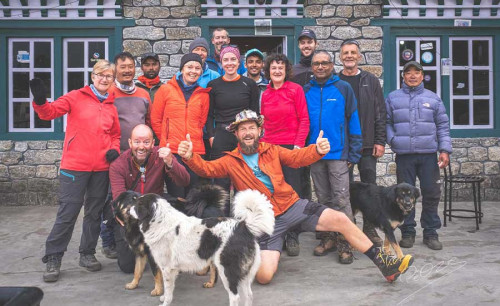
10th Nov, 2025
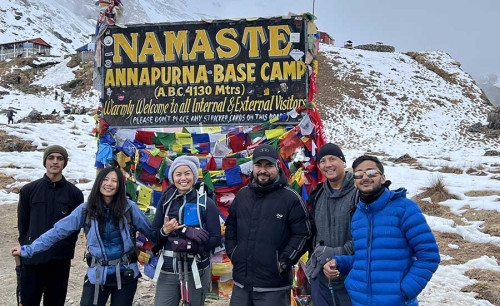
9th Nov, 2025

25th Oct, 2025

22nd Oct, 2025

17th Oct, 2025

17th Oct, 2025

13th Oct, 2025


